Communications, Strategies, and Technologies to Support Modern Work
Hosted by

Steve Boese
Co-Founder and Chief Data Officer of H3 HR Advisors and Program Chair, HR Technology Conference
About this episode
Episode 515 – Communications, Strategies, and Technologies to Support Modern Work
Host: Steve Boese
Guest: Gretchen Alarcon, Vice President and General Manager, HR Service Delivery at ServiceNow
This episode of the HR Happy Hour is brought to you by Paychex, one of the leading providers of HR, payroll, retirement, and software solutions for businesses of all sizes.
Financial capital has long been established as a key driver of business performance, but today, business leaders are increasingly recognizing the importance of their human capital in driving success. Download Paychex’s latest guide to discover why breaking down the silos between HR and finance can result in better business strategy and growth, as well as 14 simple HR metrics your teams should be tracking, and why.
To download the e-book, visit payx.me/FDMresearch.
This week, we met with Gretchen Alarcon from ServiceNow to talk about how effective employee communication is more important than ever in the new world of hybrid work.
– HR tech tools to support effective employee communication
– How to help employees build connections
– Importance of easy accessibility to employee needed information
– Opportunities through the employee journey to improve two-way communication
Thank you, Gretchen, for joining the show today! Remember to subscribe to the HR Happy Hour wherever you get your podcasts.
Transcript follows:
Steve 0:27
Welcome to the HR Happy Hour Show, my name is Steve Boese. Great to be with you today. We have a great show today, we are welcoming back one of our favorite guests, a longtime and frequent guest on the HR Happy Hour show, Gretchen Alarcon from ServiceNow. Before we welcome her, I of course want to thank our friends at Paychex for all their support. This episode of the HR Happy Hour is brought to you by Paychex, one of the leading providers of HR, payroll, retirement and insurance solutions for businesses of all sizes. Financial capital has long been established as a key driver of business performance. But today, business leaders are increasingly recognizing the importance of their human capital and driving success. Download Paychex latest guide to discover while breaking down the silos between HR and finance can result in better business strategy and growth, as well as 14 Simple HR metrics your teams should be tracking and why to download the new ebook, please visit payx.me/fdmresearch and many, many thanks to our friends at Paychex.
Steve 1:25
So I mentioned Gretchen Alarcon back on the show from ServiceNow. Let me formally intro you Gretchen. You’ve been on this show many times. I don’t know what the number is, at least six probably now. But we’re so excited to have you here. Gretchen if you don’t know and you should by this point, she’s the Vice President and General Manager of HR service delivery at ServiceNow. She has more than 20 years of innovation experience at the intersection of people and technology. Gretchen is passionate about building products to transform HR and the employee experience with digital workflows. Recognized as a top HR Tech thought leader, Gretchen brings a unique view of the challenges many organizations face as they reimagine the future of work. Gretchen, welcome back to the show. How are you?
Gretchen Alarcon 2:11
I’m great. How are you doing?
Steve 2:14
I’m well, thank you. It’s great to see you as we sort of do. We’re still early in the new year, I think Happy New Year can still be wished. Right? As we record this?
Gretchen Alarcon 2:23
Always good.
Steve 2:26
We have a great subject today, like every other work and workplace kind of outlet or media property, we’ve done a ton of COVID content on this podcast over the last couple years. And how could you not really, but one thing we haven’t specifically dug into is employee communication, right internal communication and connection. And really deliberately, we’ve talked about hybrid work some, we’ve talked about safety some but we haven’t really talked a lot about communication, which we’re going to talk about today in some detail, which I think is a great subject, and a really important one as organizations continue to work from home, right, largely. But before we get into that Gretchen probably been almost a year since you’ve been on the show or so. I’d love to get a little update from you, what’s been happening at ServiceNow? And what’s kind of exciting as you guys head into 2022?
Gretchen Alarcon 3:18
Yeah, you know, we’ve had so much going on, it’s been so much fun to be on the rocket ship, as we call it at ServiceNow. And really be thinking about how do we focus on being the system of action, system of engagement for employees? And you know, for me, what’s been really exciting to think about this is really putting my head into as an employee, how are you managing all the different things that are coming at you and still trying to drive your career and thinking about your personal growth? So a lot of our focus in the last year has been on things like where does employee go to get information, we’ve looked at things like our employee center, or if you’re thinking about making a change, whether that’s a new job, or new assignments within your current role, what journeys are you going on? And how can we help you be better supported throughout those journeys? And then there’s a big topic, as you know, mentioning hybrid workplace, where is all this work happening? So thinking about people and places? And what is the intersection of that going to look like? Those are kind of three kind of driving forces that we’ve been focused on for the last year, really. And we’ll probably be the foundation of what we do into 22 as well. There’s just so much opportunity and so much to talk about in those areas.
Steve 4:31
Yeah, thank you Gretchen for that update. ServiceNow is such an interesting company because you’re playing in this kind of it’s not like the classic sense, right of an HR software. It’s not performance management, per se. It’s not payroll per se, which are important things. Believe me, I love payroll, right. I think about it a lot, quite frankly. But you’re really getting into things that are those deep connective kinds of things that help connect people to each other, connect people back to the organization and support them critically, right? Supporting them. Throughout the user journey, it’s a good word, I’m trying to think of a better word, I don’t have a better word for it, honestly, the journeys that they take inside in the organization, and as they move along their career path. So I think it’s, it’s exciting that the tools that you guys create are, can really drive a lot of, like meaningful impact in organizations, I think.
Gretchen Alarcon 5:28
Yeah, I mean, what’s what’s exciting about this focus, too, you know, there’s always going to be a need for a human capital management system. Right?
Steve 5:37
You’ve spent a lot of time building Capital Management Systems.
Gretchen Alarcon 5:42
I’ve got some strong opinions on on HCM, for sure. But you know, I think that this thinking about what does an employee need in terms of thinking across the enterprise is different, right. So thinking about more in terms of all the things that I have going on throughout my day, sometimes I need to be into HCM . But a lot of times, I’m just looking for basic information, answers to my questions, where do I want to go next? And so for me, it’s been a fantastic shift in paradigm, and really thinking about, you know, how do we help employees really build those connections? Whether those are the people or systems or the processes across the entire company?
Steve 6:18
Yeah, I think that’s really, really true. Gretchen, I mentioned at the top, we have done a ton of COVID content, which we have. But we have not talked a lot about it sort of intentional communication. And both from a strategic point of view, and also from a technology point of view, right? Like, we’ve all used Zoom 1000s of times, we’re talking on Zoom right now, on Teams, and all those things. And we’re sort of familiar, and we get all that stuff, I think but maybe we’ll step back a little bit from from the tools and talk a little bit more about the approach as we head into 2022. And organizations continually dealing with these externalities that are putting stress on people on processes on just physically getting work done. I’d love for you to maybe talk a little bit about your thoughts on what HR leaders and business leaders should be thinking about in terms of keeping people engaged and and sort of keeping communications effective, as we sort of collectively head into Oh, my God, I can’t believe this is all still happening kind of phase of this.
Gretchen Alarcon 7:24
I like that as a new phase, we’re not gonna actually use a term for it. We’re just going to call it Oh, my gosh, I was just I, you know, I think it’s interesting to think about employee communications, because I would argue that if you talk to most HR people, they would say they’ve had a lot of focus on employee communication in the last couple years. And they’re right, right, because you think about the number of broadcast announcements, they have had to get out to their populations around offices or open offices or closing be vaccinated pitchers like there’s been a lot of communication out to employees. But I think the thing that I’m seeing is kind of a nuance, as we head into next year is we need to get past those broadcasts in our clothes and into the things that are really relevant for specific employees personalized to meet. So you know, yes, I understand we have a Corporate Challenge, where we’re looking at what’s going to happen in terms of new office entry procedures. And I care about that at the corporate level. And then I want to make sure everybody’s safe. But for me, specifically, what do I need to do to re-enter the office? What do I need to do to have my next meeting with my manager? What do I need to do if our benefits are changing? Right? So a lot of the emphasis on communications in the last year, I would suspect, has been more of that broadcast level, and not so much about that targeted to the individual employee or groups of employees. And so for me, we’re kind of hitting a shift there, where we need to start really talking about personalization that people are looking for.
Steve 8:56
Yeah, good question. I think that’s a great observation. And I totally agree with you, I do feel like and through kind of, you were just required to write the reaction in 2020, maybe even into 2021 was so just fighting fires, right? You’re reacting. You’re just trying to figure out what’s happening where who’s been impacted? How do we inform them XYZ, right? This office is closed, this office is open, it was just mass, mass mass. And then all organizations, if they hadn’t already adopted them, pretty much all organizations that felt like they needed to adopted zoom and adopted Teams or Slack or pick your communication kind of platform. And I think maybe we got lulled into thinking okay, now there’s a tool now or anybody could communicate with anybody else besides email. We’ve always had that but you know, and then we kind of said, Okay, let’s move on to the next thing that as he said, what really matters now and it probably is always measured is not so much. Okay, what’s the entire what is the information that you find? tire company needs to know, that’s always been important. But what do I need to know? Like, what? How do I figure out where the information is that I need? Not just for me personally, but also in the context of what I’m doing. I, I’d love for you to maybe you could talk a little bit Gretchen about the importance of kind of discoverability of information and kind of maybe some of the things that you work on you and the team there to help your customers improve that the ability to just find information that’s going to support people in their individual roles in their teams.
Gretchen Alarcon 10:32
Yeah, you know, I think it’s an important concept, right? Because if you think about it, all of us live in a world right now, where in our personal space, anything is discoverable, right, quick to who we are. We are one search term away from finding things. And a lot of organizations still haven’t made that shift when they think about the tools that are available to employees, whether that’s search on your portal or search on your mobile phone. So that idea that something is discoverable and targeted to you is still a, you know, kind of a stretch for some organizations. For there’s a What can I find when I search question? And especially if I have to go to multiple places to look for information, right? Because again, what I used to do is go to one portal, hit Search, and the entire universe comes back to me. But if my organization is still saying, Oh, you have to go to the HR portal for this question in the IP portal for that question, and this is a finance question. You’re asking the employee to shift paradigms. And that is frustrating, right? Because again, I probably in my head allocated about 30 seconds to get from my question to an answer. And so how quickly can you solve that problem? And some organizations are looking at virtual agents for that. Some organizations are looking at AI search for that.
Gretchen Alarcon 11:47
So there are tools out there, but there’s kind of a starting principle of everything should be searchable, right, everything should let what information is made available to your employees. And then I think the other piece that comes with that, too, is understanding that employees don’t always use the same terminology. Right? So one of the challenges and opportunities when we think about machine learning or language is to say, hey, you know, I call it a paycheck, HR calls it a payslip. Am I going to find it? If I use a phrase paycheck? Or are they going to say no results? Because I didn’t use the exact same terminology? Right? So there’s a terminology question there. And then I’d say the last piece that really comes up a lot is, What channel are they going to use? Because, you know, a lot of organizations spend time thinking about their portal, and they absolutely should. But a lot of other organizations have said, look, that portals been static for forever. So is that where you’re directing people? Do you want them to be able to use a mobile? Is it on teams? Like, what are the ways the doors that your employees are opening to look for information? And is it consistent across all those different areas? Because I have to know, it’s an HR question. And I have to ask it on my on my phone, versus it’s a finance question that that’s only available from the portal like, yeah, it’s too complex for me to understand. And I’m just gonna stop asking the question. And now you have a disengaged employee.
Steve 13:11
Yeah. And you need to take into account especially in the larger organizations, or the enterprises out there. And certainly, I imagine a lot of customers that you work with, yeah, they’re one big organization, but they’re probably hundreds of many organizations, right? You have frontline workers who are going to be on mobile phones, even if that if they’re able to the desk workers, you have remote workers, you have maybe offshore workers, right, and maybe you’re doing development in, you know, outside of the country somewhere. And all of those folks are going to have different requirements, different needs and different expectations, even probably right of how they want to be able to find the information that they need to do their jobs and then be to get the receive the information that they need from the organization is, is that something you guys think about or work on in terms of, hey, we’ve got to be able to deliver not just information and communication, but basically, to enable kind of process delivery or process execution? If that’s the right word? I’m not sure. What do you guys use for that, but process enablement? Just in a myriad of different ways and on different modalities? Is that if that’s the right way to say it.
Gretchen Alarcon 14:20
Yeah, no, absolutely. You know, it starts with understanding, you know, what are the processes that you expect your employees to have access to, right? So that whole thing around am I broadcasting? Or am I just targeting a message to someone who had a flexible spending account last year and I want them to know that they need to re up for next year? Right? That isn’t they send it to 50,000 employees that send it to the 22,000 who actually made this choice and then, you know, as deadlines are approaching, narrow those communications down, so people know they need to take action. But the other part about that, too, is making sure that when you do that, it’s actionable. So it’s not just an off to say, you know, all of this is here, but we want you to actually do something. And here’s how we get you to it. You know, a great example of that is, you know, we have a large consulting firm that we partner with, you know, global, hundreds of 1000s of employees. And they were looking at agility as one of their biggest drivers. And for them, they wanted this to be a place where they would say, hey, we need a central place where employees can act with everything they need. So they’re using our platform for that. And then right now we’re we’re focused with them as on onboarding and return to workplace processes. So again, really focusing in on which employees are going through this process, and what actions do we want them to take? It can’t just be information, it needs to be tied to information is good, but tell me what my next step is. So I feel like I have done the thing that I need to have the reason I looked for this information in the first place.
Steve 15:56
Yeah, Gretchen, I almost kind of stopped you a second ago to sort of make that same point, or really to ask the question, and I don’t want to, I want to say I’ve sort of got a really deep survey of all the kinds of there’s a lot of, especially in the HR space spreadsheet, I’m sure you’re well aware of, there’s quite a few solutions that have emerged over the last, you know, half a dozen years, that are AI and air quotes, you know, kind of ai, ai search capability, kind of the idea is, give us your portal, give us all your documents, your handbooks, your policies, your procedures, anything you’ve got, will digest it, and you can go into a chatbot or something, and we can spit back out that information to you and maybe do some of the matching, like the paycheck pay slip stuff as well. And I think those things are pretty cool. I’ve seen a few of them. I don’t know that most of them, if not any of them can really do much more right now than just present the information back. So you made, I think, a really important point of so the inquiry is something along the lines of hey, how do I adjust my you know, how do I adjust my benefits? Or how do I change my dependents, right, say something like that for a benefit plan or something like that, those tools might be able to tell you, Oh, you got to go to the benefit system and do XYZ and here are rules about that. Okay, great. Now, I’ve got to go figure out how to do that, I guess is my point versus the ability to get that information to get that answer, you know, in a manner that that is timely, it’s accurate, etc. And then can take me down the path of actually doing what it is I want to do, because I don’t really just want to know how to do that thing. I want to actually do that thing.
Gretchen Alarcon 17:33
Right. Yeah, I think it’s important to understand that, you know, employees tend to to start engagement like this for two reasons. There is looking for information, which there are cases like that, hey, you know, Martin Luther King day, do we have the Monday off? I think so. But I’m not sure. Right. So there’s that. But there’s also the other side of that, which is, I have that question, because I was thinking of taking the week off to go skiing. I you know, so do you need to know about your PTO Do you want to get do I make a request? Right? So there’s kind of that, what’s the likelihood that you’re going to a next step? And so part of our whole focus when we’re thinking about this from an employee communication standpoint is as an employee engages with the system? Yes, absolutely. We want to shorten time from asking a question to getting information. But if we can go the next step and say, and your next likely action, or you know, does this resolve it? And if not, what’s next for you? How can we help that? So they really feel like they get a resolution. And I think what that really starts to become an issue is when you’re talking about things that go across the enterprise, because you’re not always starting with? I know, this is an HR question, right? I might have just a general question. And then I may need some more guidance to understand if this is something where, you know, I need to go to procurement to request access to new software, or maybe it’s it. So having the communication piece start with what is the employee trying to accomplish? And then how can we direct them so that they know what their next step is, I think is really an important part of thinking about employee communication.
Steve 19:05
Yeah, absolutely. Gretchen, thank you for that. Just a quick reset here. We’re talking with Gretchen Alarcon. One of our favorite guests on the HR Happy Hour Show. Gretchen’s at ServiceNow and we were talking about employee communications and kind of ways to make your communications not only effective, but personalized. And I think really what we’re landing on here is is a little bit more actionable as well, right? And to sort of support employees in creating just supporting plays with personalized experiences that lead to better outcomes, right. That’s what it is. Okay, here’s what that’s interesting to say. It sounds like it’s hard to do. I really like I’d love for you to comment a little bit for our listeners, especially because we’re talking a little bit abstractly which is fine, but like, is this something an eight I’m not making this like a hard pitch for ServiceNow technology but we are talking to you from ServiceNow is this something that’s really difficult to do to like gather information, maybe in disparate systems, be able to present it to employees in get that they’re able to engage with it and also kind of drive those outcomes they’re looking at? Because it seems like, like, I don’t know, like, we know those types of like enterprise resource planning projects from hell, right? So I’d love for you to just describe, like how this actually can work?
Gretchen Alarcon 20:24
Yeah, you know, I think one of the greatest ways to think about this is, you know, I’m going back on a journey comment, you don’t have to call it a journey, you can call it a process, you can call it something that it’s multiple steps, right. But if you think about it, what we’re looking for in a lot of these cases, say, you know, from the end users perspective, as an employee, or as a manager, I have an idea of what the outcome is, and I’m trying to get to the challenge is, I don’t necessarily always know all those steps to get from where I am today to where I need to be. So thinking about if I am taking on a new job inside my company, right, right, I found a great opportunity, I’m going to transfer the you know, process from an HR business partner standpoint, is pretty straightforward. Take the employee, change their title, change their job code, maybe give them a salary bump, and you’re done. Sure. The employee standpoint, it’s really just a starting point, right? I have a new manager, I have a new team I have to meet, I might have new skills that I need to take a look at and say, Hey, I need a new learning plan around this. So from an employee standpoint, there are a lot of different steps that need to happen. So one of the things we’re really focused on is, how do we help the employee and the manager together, talk about what that process looks like, and lay it out for them so they can actually understand you’re on step 110. And by the way, your manager may actually be the one who is setting that process up for you. Because, again, hrs role was to make sure that we had all the data correct. But the manager is the one who’s actually going to help you get to success in your new role. And to her us, that’s when we start to really look at our employee journey management to say, let’s look at how that process can be improved. So again, the employee is thinking unexcited, and I know what my path looks like, so I can get back to, you know, get to my next level of productivity, and really prove that this is a great transformation for me.
Steve 22:20
Yeah, question. Thank you. And as I recall, from seeing some of this in action, right, last year, as we were going through our top HR products of the year process, a lot of this can be fairly easily configured, right? Like the whatever, eight steps or 10 steps or 12 steps and what this, what those steps entail, and what information is presented in each step, and what’s required to move on etc, etc. It’s not it’s not like six months of it, people coding this right in a dark room somewhere, right? It can be kind of managed by either managers or HR, or HR people themselves. And maybe you can just maybe tell us how that works a little bit.
Gretchen Alarcon 23:00
Yeah, absolutely. And I, to me, that’s the most important thing, right? So if we’re going to be a system of action, we have to be actionable, pretty easy to use. So a lot of our focus here really, again, is how does a manager or an HR person define that process? And make it easy to adjust the stuff and adjust the process over time, right? So it might start by saying, Okay, we think generally, that new role process is defined with 10 steps. Here’s what the manager does, here’s what the employee does, here’s a mentor who has a role to play that sort of thing. But then, you know, what I might choose to do for someone joining into my organization might be different than what you might choose to do. So I needed a manager to have a very easy tool to make changes as well. And to say, this is different for me, right? Or this is something we’re actually I have to go build a separate process, very easy to add in, because this is something that is specific to my organization. So we’re really you’re talking more about configuration than we are building from from scratch. And for those organizations that really want to say, hey, actually, I do want to kind of completely build my own thing. They certainly could use our Creator workflows to start from scratch and do a whole process, right, but really, for most processes that we’re talking about for an employee or a manager, it’s really configuration within our journey that I’m seeing as as where they would want to go next.
Steve 24:28
Yeah, thanks, Gretchen for that. I didn’t want to get so deep into it. But I kind of did too, though, because I know well, it just even from my own perspective, when I first became introduced to ServiceNow in this space, right, and learn more about what you guys have been doing, particularly since you’ve been there. I think everybody who’s listening to the show, they know what the payroll system does. They know what the applicant tracking system does. They know what the performance management system does. Those things have been around for forever. And we get them we get how they work. We understand them. We can conceive how they work without even even getting into them all that much. But this is something it’s, quite frankly, it’s newer, it’s a little bit, it’s unique, I think in where it sits. And it’s also unique and some of the value that it can provide to organizations be above and beyond, you know, that that great payroll system and that great, you know, applicant tracking system, etc. So I thought it was important to maybe dive into that a little bit a little bit more for folks who may not be as familiar. So thank you.
Gretchen Alarcon 25:23
Thank you. Yep. I’m always happy to talk about that.
Steve 25:27
So Gretchen, it’s early 2022. As we said, the year three of I can’t believe this is still happening to all of us, is there any kind of things you’re thinking about? Maybe the team they’re thinking about, or some of the bigger organizations are working with have a this is going to be pretty important. Whether it’s, it doesn’t have to be COVID. It can be just wherever labor market shortage, it could be, you know, just just seeking new markets development, right? I mean, no one can hire anybody. So there’s a premium on retaining people. So what can we do to try to engage them in such ways that they feel connected to the organization and we were invested in their development? And so what are some of the things like maybe bigger picture 2022 kind of holds for you in the team? There may be some of the organizations are working with better interesting to you?
Gretchen Alarcon 26:14
Yeah. Yeah, I think it is a little bit of a hole. Okay. Well, here we go again, right. I definitely think regardless of which round we’re on, on on COVID, this whole focus on people in places is going to continue to be a really interesting topic, right? So rather than necessarily saying, you know, work as you play as a place you go to work as a thing you do. And then where you do that work is maybe a new question. And I want to be really clear, that is more of an exempt population challenge, right? If you are a higher hourly population, you are in the office or in the manufacturing floor, or, you know, on the on the hospital floor. Yeah. So that people in places question does change a bit, depending on the type of worker we’re talking about? And I think that’s going to continue, because I think a lot of organizations are still asking the question around, we prove productivity works when people are not necessarily in an office. So then when we bring people to an office, what is the point? What are we trying to accomplish? In those times? I do think that’s going to continue to be an ongoing conversation. And with that, being an ongoing conversation, back to the employee communications, how you reach people, when they are not consistently in a place to hear broadcast messages, or what have you, is going to continue to be a big opportunity. I think having the conversation around, you know, are you using your social platform more? Are you changing the way that you reach up people? Are you doing more over mobile, you know, is is text chat becoming more of a concern.
Gretchen Alarcon 27:44
One of the things I was actually really excited to see us be able to release this last year was the idea that someone might be able to start a conversation with a with an agent, let’s just say I, as an employee, reach out on virtual agent, I have a concern. And then as the agent picks it up, have the agency within teams then able to actually say actually need to talk to you live, and let’s just take this to a vote. Right. So again, being able to say that, you know, this started, we thought this was simple. It’s not, you need a live conversation, let’s move that way. So I think those sorts of things around how you better reach your employees, regardless of what channels are they’re coming through, are really going to be important. And they’re going to continue to be, you know, a large question around engagement, just to kind of capture them. And then you mentioned skills, I actually think, generally, what we are going to see a lot of conversations around are, you know, as organizations try to hire are being challenged for hiring, I think we’re gonna see people looking at different ways of engaging their employees, and how do you develop right, so that, you know, journey accelerator capability of, you know, you had one role you’re moving into another role is gonna be a huge focus on how do I make more learning available to my employees? Today, we have that we have a capability to call learning posts where we can make it available in a process, I think generally thinking about, I need to get an employee who is here, I want them to stay. So I want them to have better enrichment opportunities, which might mean new role, new assignment, new projects, and then how am I going to enable them to be successful in that right. I think that whole sense of giving employees more opportunities, but then supporting them into those new opportunities is going to be a really big focus this upcoming year.
Steve 29:29
Yeah. Gretchen, I think you’re right on that. To me, it’s maybe the big story for this year for sort of human capital, broad strokes, right? Because the focus has been I’m guilty of it too, right. Oh, the labor market, the number of open jobs, unemployment, etc, etc. No one can hire right we we spent six months reading story after story, right? If you’re in your Apple news, or your Google News about, you know, Joe’s bakery on Main Street, can’t find anybody to work right? Multiply that times 55 housing, I think I’ve read 50,000 of those stories this year. And they’re all true stories. I’m not knocking them, but like from the sales, people will always tell you, I don’t know if you’re Steve Cratchit. But the sales will always tell you, Hey, we got to worry about the customers we have, it’s easier to keep a customer, right? And maybe expand what we’re doing with that customer versus go out and find a brand new one, right? From nowhere. You think things choose employees, right? It’s super hard to recruit right now, no matter what the industry, it is, no matter what part of the country you’re in, no matter what skill level you’re recruiting for, but you’ve got all these employees, right kind of in place, what are we doing for them, and to help them and to grow them? Right, and to make sure that, that they do want to stay? Right, because it’s much better to continue to nurture and grow employees and develop employees than it is to go out there and find this mysterious employee out there, candidate out there that we can we can’t find, right.
Gretchen Alarcon 30:54
Well, it’s important to because done, right, you’re gonna wind up developing, you know, your next level of management or supervisors or what have you, right, because you have people who are going to be stressed. And then you want to make sure at the same time, that you’re not pushing so hard that you’re pushing into burnout, right. So there’s going to be a really interesting new unfair around, you know, we can’t hire as fast as we wanted to. We have people who maybe we would have said, we’re ready for a new role in two years. Could they do it now? And what that looks like, right?
Steve 31:25
It’s a great point. Yeah, I was just reading, then then I will go on forever about this. Because I read, there’s a whole nother show. Maybe we could do. But I was just reading like an MIT pretty long MIT study. I was reading it this morning. And they figured out like what’s driving people to resign the great resignation stuff. And 16th on the list was compensation and benefits stuff that was 16. They identify 15 Other things that were driving more resignations, before comp, and by now again, that’s not true with every industry and every type of role and a lot of frontline workers in kind of service jobs. That may be true. But yeah, so there’s a lot to talk about there. Gretchen, I don’t want to I’ll keep you all day, which is not fair to you. So I don’t want to do that. Well, we’ll get you back on the show later in the year and circle back on some of these things. I’d love to do that if you’re game for it.
Gretchen Alarcon 32:10
Absolutely. I’m always up for these kinds of conversations.
Steve 32:14
Gretchen Alcon ServiceNow. So for folks who want to learn more about some of the technologies and some of the solutions and capabilities that we sort of talked about a little bit Gretchen, where would you like them to go?
Gretchen Alarcon 32:24
Absolutely hit up servicenow.com. That is your spot.
Steve 32:28
Awesome. And we can find you your LinkedIn Twitter stuff. You’re very popular.
Gretchen Alarcon 32:37
Always wanting to geek out on these sorts of HR topics. I love it. Whichever venue works.
Steve 32:42
Absolutely. We will put that information in the show notes as well as well as links to the ServiceNow stuff. It’s good to see you Gretchen. Glad you’re well. Happy New Year once again.
Gretchen Alarcon 32:51
Thank you. Take care.
Steve 32:53
Thanks so much. This has been the HR Happy Hour Show. I want to thank Gretchen Alarcon one more time from ServiceNow. I want to thank our friends at Paychex for all their support as well. So this has been a great episode of the HR Happy Hour Show. Catch up all the archives at HRHappyHour.net. We will see you later.
Transcribed by https://otter.ai
1 Comments
Leave a Comment
Talk to us
If you want to know more about any aspect of HR Happy Hour Media Network, or if you want to find out more about a show topic, then get in touch.

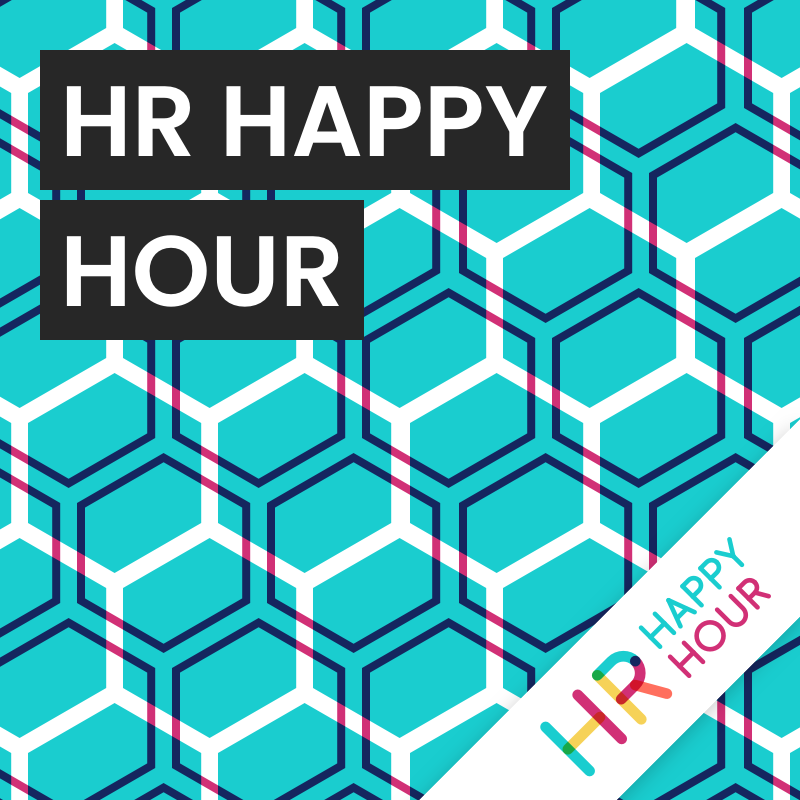
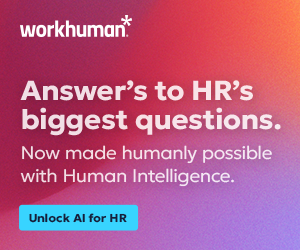
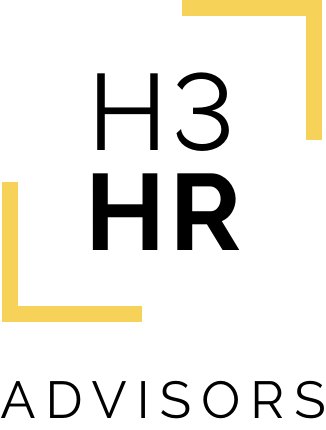
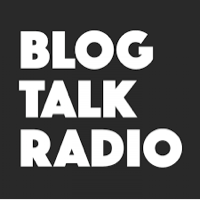
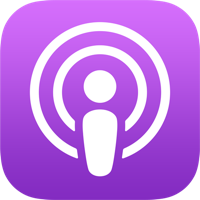
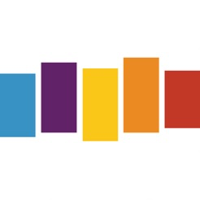
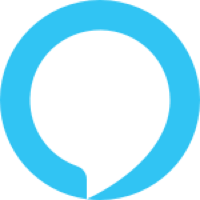


Great episode! I love listening to the show. There is always amazing content. Do you have a copy of the MIT article? I’d would like to learn more and share it with my team.